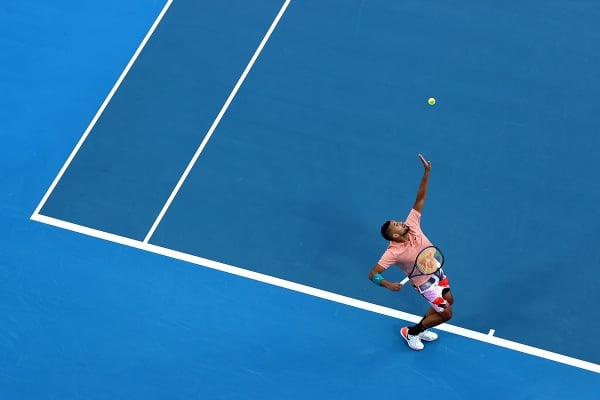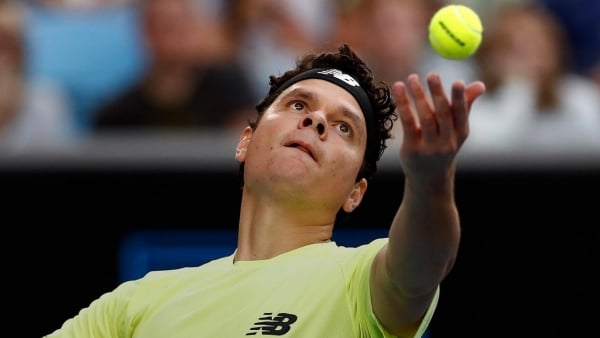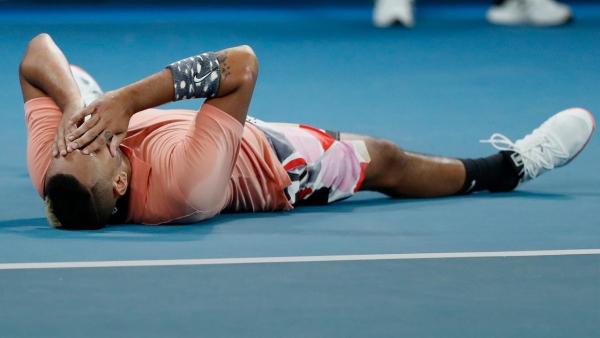Data and insights powered by Infosys
The first week of Australian Open 2020 has been full of late-night thrillers, shock upsets, and some jaw-droppingly good tennis. With defending champion Naomi Osaka sent packing amidst a flurry of third-round upsets, and Roger Federer keeping his hopes alive by the tightest of margins, the glorious unpredictability of Grand Slam tennis has been there for all to see.
To try and help you make sense of it all so far, ausopen.com have teamed up with the number crunchers at Infosys to identify some of the most notable statistical trends behind the week one results.
Raonic dominates while Zverev regains serving form
It has been a while since Milos Raonic was in the latter rounds of Grand Slams after struggles with injuries in recent years, but based on his performances so far in Melbourne Park, he is back to somewhere close to his best.
Raonic is into the last 16 without dropping a set – taking out sixth seed Stefanos Tsitsipas in the process – in large part due to his supreme serving. The Canadian has only faced three break points across his three matches so far, saving all of them, the best record of any player left in the men’s singles. He also tops the standings for first serve points won (90 per cent), and most unreturned first serves (63 per cent) as well as the third-most unreturned second serves (35 per cent).
After Alexander Zverev’s highly-publicised struggles at the ATP Cup, the German has impressed on serve so far, dispatching all three of his week one opponents with the minimum of fuss. Zverev has the highest first serve percentage (79 per cent) of any player at Australian Open 2020, making just seven double faults. In contrast, rival Daniil Medvedev – who is seeded to face Zverev in the quarterfinals – has served 17 double faults.
Surprise package Swiatek

Iga Swiatek may not be a familiar name to many tennis fans as yet, but the Polish teenager – who reached the girls’ final here two years ago – has made an impressive run to the last 16, beating No.19 seed Donna Vekic in the third round.
Swiatek’s success is in part due to her ice-cool nerves under pressure. She has saved 14 of 17 break points across her three matches, her success rate of 82 per cent the highest of any female player left in the draw.
At the other end of the age spectrum, 32-year-old former champion Angelique Kerber has been playing herself into form, as demonstrated by her superb returning so far. Kerber has made more returns (91 per cent) than any other female player in the first week, with Simona Halep (88 per cent) and Kiki Bertens (86 per cent) also impressing.
Marathon man Khachanov
Nick Kyrgios’ five-set Saturday night thriller with Karen Khachanov was one of the highlights of week one, and one could not help but feel for the Russian No.16 seed, who was involved in the two longest matches of the tournament so far.
While his clash with Kyrgios lasted four hours and 26 minutes, that still wasn’t as long as his second-round epic with Sweden’s Mikael Ymer – a gruelling four-hour, 34-minute marathon on Court 3.
In the women’s draw, Alison Riske will be looking to repeat her Wimbledon upset of Ashleigh Barty when the duo meet at Rod Laver Arena on Sunday, but the Aussie will be well aware that Riske is not exactly the freshest of players.
As well as playing doubles, the American has been involved in some lengthy singles clashes, most notably her first round battle with China’s Yafan Wang which at exactly three hours, has been the longest women’s match of AO2020.
Bushfire donations racking up

At the start of January, Kyrgios announced he would donate $200 to Bushfire Relief for every ace he hits this summer, and the Aussie’s 75 aces so far at AO2020 – second only to John Isner’s 85 in the tournament standings – means the fund is guaranteed to receive $15,000 from his exploits in Melbourne.
Isner is donating $100 per ace as well as 25 per cent of his prize money, and after his third-round exit to Stan Wawrinka, that means the American will be handing over $53,500.
Switzerland’s Belinda Bencic may have endured a tough time on court during her 6-0 6-1 third round loss to Anett Kontaveit, but again charity will be the winner. Having pledged to donate $200 for every double fault she served down under, Bencic’s 16 double faults in Melbourne add up to a $3,200 donation from the sixth seed.

